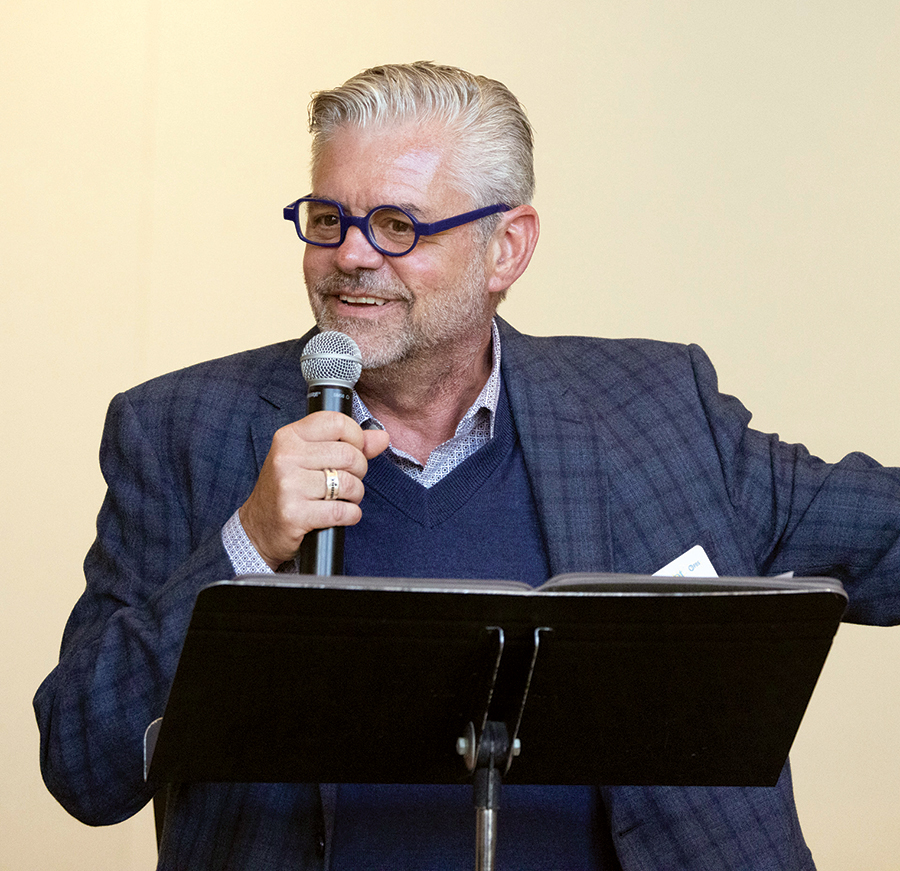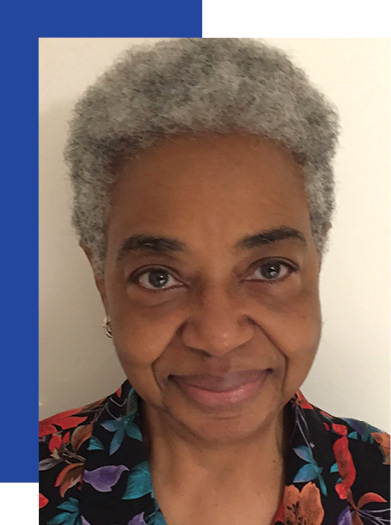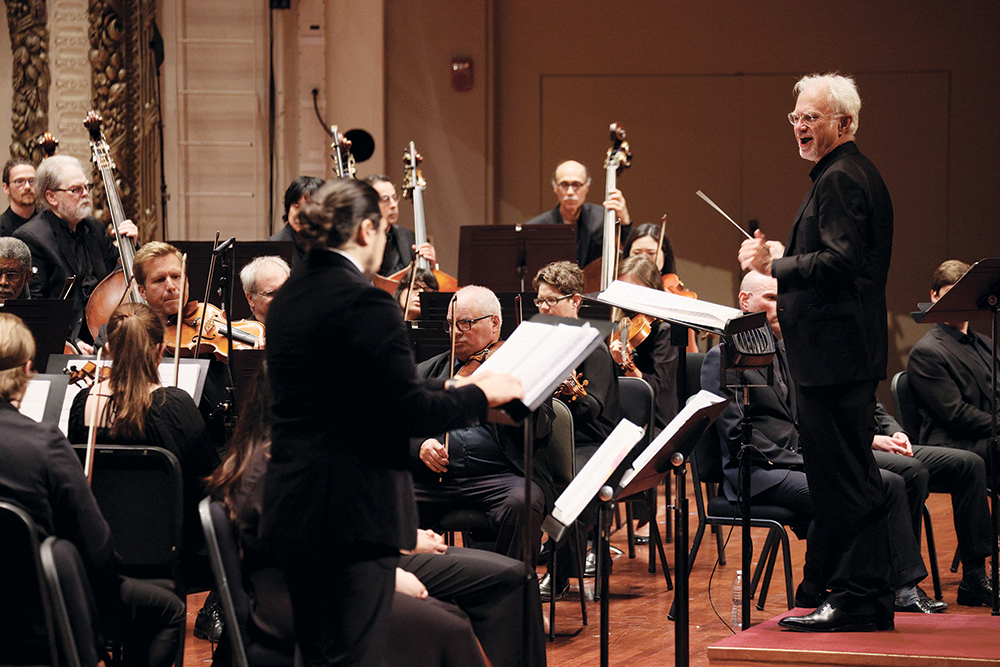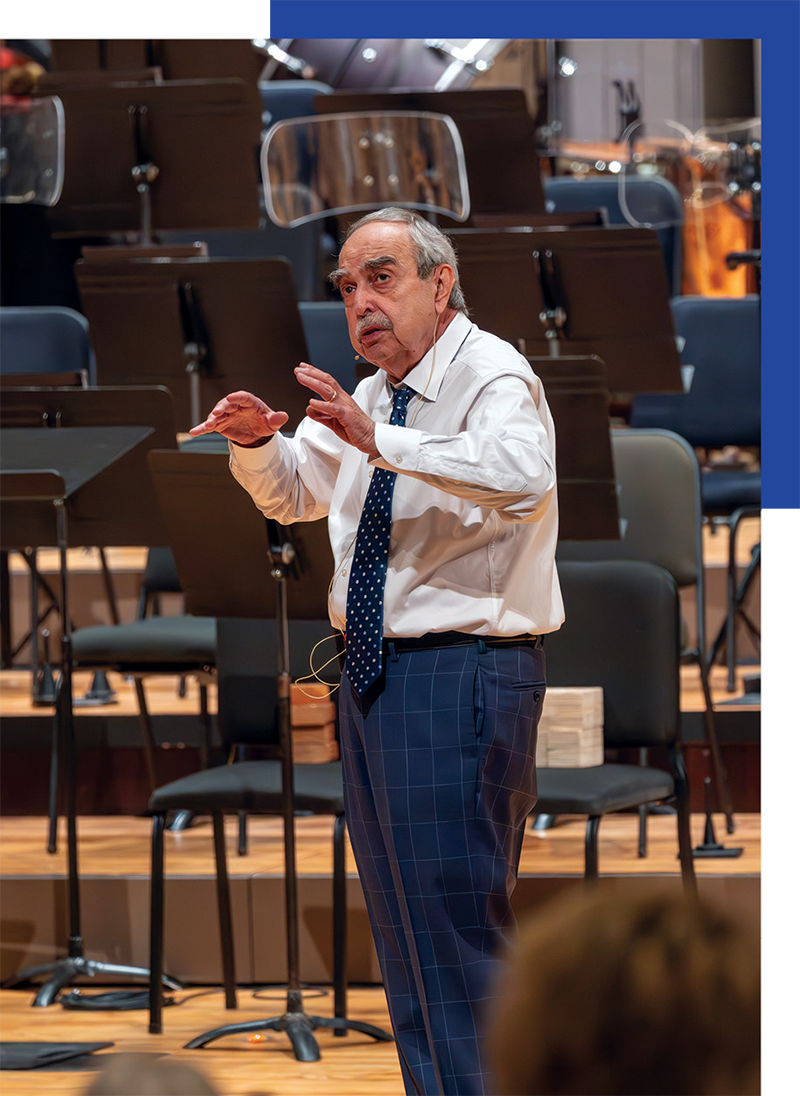New Model, Same May Festival
A revolving curatorial model opens the door to fresh discoveries,
says May Festival Executive Director Steven Sunderman
by Hannah Edgar

As the adage goes, “out with the old, in with the new”—an apt phrase as the May Festival modernizes its Festival model.
In a departure from 150-year precedent, this year’s May Festival is the first to welcome a Festival Director. The curatorial position replaces the Festival’s “music director” role, last held by conductor Juanjo Mena, and will change each year. The revolving door invites a broad array of artists to shape Festival programming in years to come. Julia Wolfe, a Pulitzer- and MacArthur-laureled composer, will be the first to do so this year.
Outgoing May Festival Executive Director Steven Sunderman says Wolfe was a perfect pick to inaugurate the new model. Not only is she one of the leading composers of choral-orchestral music—the May Festival’s bread and butter—but she has a ready-made roster of collaborators thanks to her ties to Bang on a Can, the New York-based music collective she co-founded in 1987.

Hiring a Festival Director who could “leverage a large network” was important, says Sunderman. Depending on the Festival Director, the new system paves the way for Cincinnati audiences to encounter artists who rarely make their way to the Cincinnati area. This year alone, Wolfe’s connections have looped in the Bang on a Can All-Stars, a quasi-rock, quasi-classical sextet; the Lorelei Ensemble, featuring artists from across the U.S. whose focus is on presenting “living” works for treble and women’s voices; and the Steiger Butte Drum and Singers, an Oregon-based group of Native American traditional musicians who have collaborated with Wolfe’s Bang on a Can colleague (and husband) Michael Gordon.
In planning the shift to the new model, Sunderman and the May Festival Board looked to other organizations with a similar carousel-style sensibility. Perhaps the most prominent is the Ojai Festival, in southern California. The prestigious summer series has cycled through music directors annually since its inception in 1947.
“Ojai was definitely something we were looking at, as well as local models,” Sunderman says.

Mary Stucky has served on the May Festival Board for 15 years and on its artistic advisory committee for about a decade. Prior to that, she taught at the University of Cincinnati College-Conservatory of Music, where she specialized in oratorio repertoire. What seems like a radical new direction is, in Stucky’s eyes, just an outgrowth of the innovation that has always characterized the oratorio genre.
“Today, Haydn’s Creation comes to us as something of a chestnut. But in its day, it was a highly new take on the Creation story…. In many ways, we’re getting back to the original spirit of these festivals, with new music,” Stucky says. “The [Festival] Director just adds energy to what has always been a dynamic choral tradition.”

The Festival Director role has some precedent in the May Festival’s recent history, too. Composer John Adams took on some curatorial responsibilities when he was named Creative Partner for the 2020 Festival—deferred, naturally, because of the Covid pandemic. So did composer and researcher Gerard McBurney, whose stint as the 2017 May Festival Creative Partner generated two novel multimedia presentations of Felix Mendelssohn’s A Midsummer Night’s Dream and Edward Elgar’s The Dream of Gerontius. In 2019, composer and conductor James MacMillan and Grammy-winning vocal ensemble Roomful of Teeth shared the Creative Partnership duties—MacMillan conducting his Seven Last Words from the Cross and curating the Sounds of the City concert that featured community choirs, and Roomful of Teeth performing their own standalone concert at the Woodward Theater and joining the May Festival Chorus and CSO for the U.S. premiere of Mark Simpson’s The Immortal.
Those roles only influenced programming for a concert or two. In contrast, the new Festival Director gets to steer the entire programming, giving future May Festivals a bolder “throughline,” in Sunderman’s words.
“They can plan things out over the arc of the Festival,” he says.

Like Sunderman, May Festival Director of Choruses Robert Porco is stepping down from his role this season, after a historic 35-year tenure. He could hardly imagine ending on a more artistically satisfying note. Per the new model’s goal, the 2024 Festival pairs major, super-canonical works—Haydn’s The Creation, Vaughan Williams’ Dona Nobis Pacem, Fauré’s Requiem—with pieces new even to Porco. This year’s Festival marks Porco’s first time preparing Wolfe’s music, an experience he’s found exhilarating.
“I just love it. I find her unbelievably imaginative,” Porco says. “I don’t think there’s room for interpretation in these pieces. She’s very articulate about what each of them needs.”
Wolfe’s Anthracite Fields, her oratorio about those who persevered and endured in the Pennsylvania anthracite coal mining region and the legacy of the industry itself, isn’t merely powerful. When the May Festival Chorus teams up with the Bang on a Can All-Stars to perform the piece on May 23, it will likely be personal for many Cincinnati-area audiences. According to Porco, at least two or three members of the May Festival Chorus have direct connections to the mines.
“It’s a haunting thing,” he says.
Porco himself grew up in Steubenville, Ohio, an industrial town in the heart of coal and steel country. He remembers workers shuffling home with dirt smeared on their faces and clothes. The smell of industrial fumes was, in Porco’s words, “part of life”; at nightfall, the molten metal from nearby steel mills ignited the surrounding hills with an eerie red glow.
Porco’s father, an Italian immigrant, labored in the mills for most of his life. “As far as I know, he did not miss a day of work for 47 years. He was convinced that I shouldn’t do that, that I should go to college,” Porco says.
Anthracite Fields also hits close to home for Stucky: her grandfather was a coal miner who died of “black lung” disease. To Stucky, Anthracite Fields—and Wolfe’s work at large—injects a modern immediacy into the age-old genre.
“This work sounds contemporary, because it’s talking about contemporary American subject matter,” she says. “What’s exciting about our new Festival Director is she’s always worked with multimedia, with movement, with new sounds and ideas. That is really in keeping with the spirit of what we’re doing: we’re a festival of choral music, and all the ways you can use the voice to express.”
What this new model foretells for May Festivals to come remains wide open. That’s kind of the point. In considering future Festival Directors, Sunderman says nothing is off-limits. Appointees need not come from the classical, or even musical, world.
“I would love to see a stage director, or a scenic designer—someone who could take the oratorios in the repertoire and give them a new and unique staging. But that’s the nice thing about it: we’ve never done this before, so we’re not tied into anything,” he says.
Sunderman teased that the Festival Director for 2026 is already set, and 2025’s is going to be pinned down shortly. So…stay tuned.